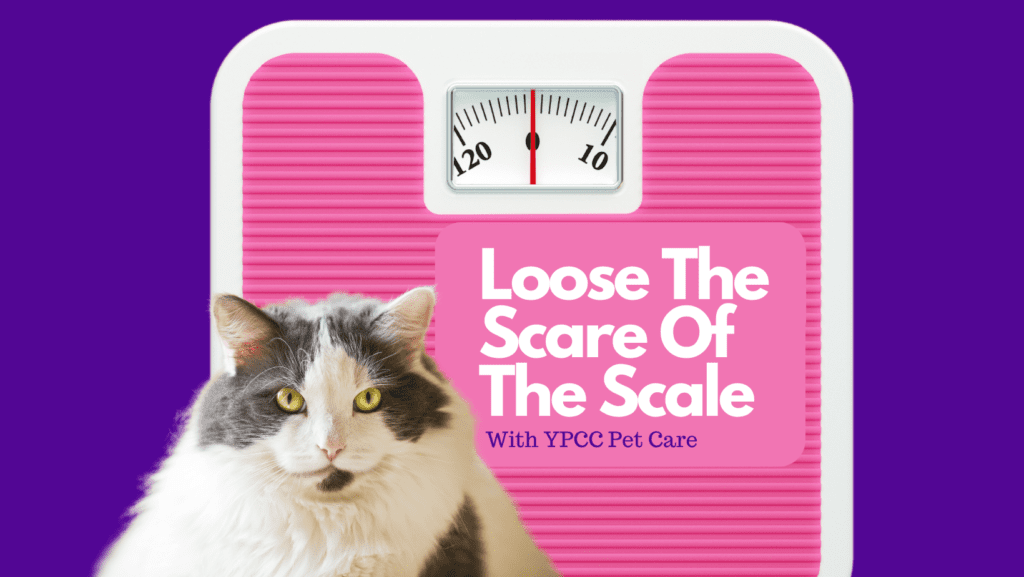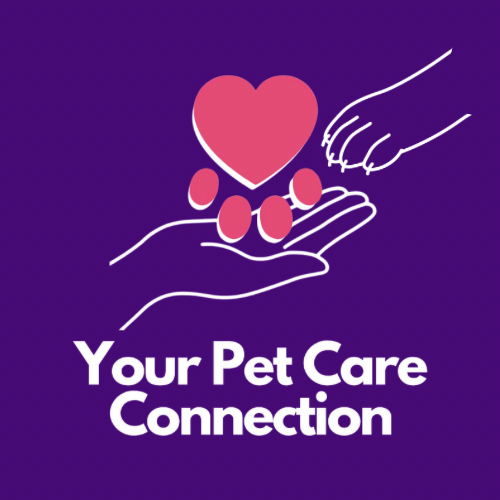
Loose The Scare Of the Scale: Tips For Moore County Pet Owners To Help Their Pet Stay In Shape
October marks Pet Obesity Awareness Month, an important time to shine a light on a growing issue that affects pets of all shapes and sizes. While a little extra weight may seem harmless, pet obesity can lead to a range of serious health problems, including diabetes, heart disease, joint issues, and a shortened lifespan. The good news is that, with the right approach, Moore County pet owners can help their furry family members maintain a healthy weight and enjoy a long, active life.
If you’re worried about the number on the scale, don’t fret! Let’s explore some practical tips for keeping your pet in tip-top shape, and how you can make fitness fun for your four-legged companion. Check out these top six tips and tricks, to help your pet stay happy and healthy.
1. Know the Ideal Weight for Your Pet
Before you begin any weight management plan, it’s important to know what a healthy weight looks like for your pet. Your veterinarian can assess your pet’s body condition and recommend an ideal weight based on their breed, age, and size. Regular weigh-ins and body condition assessments help monitor your pet’s progress, and identify any changes before they become overly impactful.
Tip: Keep track of your pet’s weight at home, using a pet scale or weighing them on a household scale, weekly. Regular check-ins help catch small gains before they become bigger problems.
2. Monitor Caloric Intake
We all want our pets to live forever. And, while it’s not quite the fountain of eternal youth we’d all hope for, ensuring that your pet is active and maintains a healthy weight can add years onto your pet’s overall life expectancy.
Just like humans, pets can easily pack on pounds if they consume more calories than they burn. It’s important to pay attention to portion sizes and choose foods that are nutrient-dense but not calorie-heavy.
Tips:
- Measure Food: Use a measuring cup or food scale to ensure you’re feeding your pet the right portion size based on their weight and activity level. Rember, the guidelines on your pet’s food bag are just guidelines, and may need to be adjusted to best suit your pet’s needs.
- Stop “Free-Feeding”: While some pets are fine with the all-day grazing style to obtain their daily calories, many are prone to over indulging when opportunity presents itself. It’s always best to ensure that your pet sticks to a routine, and a specific calorie intake, through limiting their grazing and monitoring their food intake.
- Incorporate Wet Food Into Your Pet’s Diet: switching out or adding wet food into your pet’s daily diet may sound like a simple switch. However, this simple switch can go a long way. Because wet foods contain a much higher moisture content, they lead to a pet that gets fuller, and stays fuller, longer.
- Feed The Correct “Life Stage” Food: Make sure you’re feeding your pet according to their current life stage, or age range. What food your pet needs will be influenced by your pet’s age, breed size, and whether or not your pet has been fixed/altered. Each life stage (ex. puppy/kitten, adult, senior) contains different fat, calcium, and calorie contents just to name a few. Ensuring your pet is on the appropriate food for their age and size can make a huge difference.
- Limit/Substitute Treats: Treats should make up no more than 10% of your pet’s daily calorie intake. Opt for healthy, low-calorie treats, like carrots, green beans, or small pieces of apple. Rember, a reward is only as good as you make it out to be. Most pet owners are surprised to find that when they get excited about giving their pet something (whatever it may be) their pets get just as excited about getting it!
- Watch Out for “People Food”: Giving “people food” to your pet is the leading cause of pet obesity. Avoid feeding table scraps, which can quickly add unnecessary calories to your pet’s diet.
Want to learn more? Check this out! https://vetcalculators.com/calories.html
Side Note – Why not simply use weight loss food?
Though this is always an option, the average weight loss formula tends to cut some corners. Although there is no relation between weight gain and the protein levels in your pet’s food (in fact just the opposite), the average weight loss formula drastically cuts down on the protein percentages and exponentially increases the amount of plant-based protein it contains. While plant-based protein sources are a good source of fiber, and can be good in moderation, they tend not be absorbed as well by your pet’s GI tract and are typically used as a filler. Thus, whereas a typical high protein grain free food has a higher absorbency rate, your average weight loss pet food tends to pass through your pet’s system more quickly and with a lower rate of absorption due to its low protein/high fiber content.
3. Establish a Regular Exercise Routine
Exercise is a critical part of maintaining a healthy weight, and it’s also a fun way to bond with your pet. Regular physical activity helps burn off calories, improves muscle tone, and supports joint health.
Tips for Dogs:
- Daily Walks: Aim for at least two 20-30 minute walks a day to keep your dog moving and engaged. If your schedule makes this difficult, professional dog walking services can ensure your pup stays active during the day.
- Helpful Hint: If you have a pet that’s a bit “lack-luster” about their walks, try exploring new areas! Take your dog to different parks or trails to keep them excited about their walks, which adds mental stimulation to their exercise routine.
- Interactive Play: Games like fetch, tug-of-war, or agility training can help your dog burn off extra energy, while expending calories.
- Explore New Areas: Take your dog to different parks or trails to keep them excited about their walks, which adds mental stimulation to their exercise routine.
Tips for Cats:
Just like dogs need daily exercise, your cat does too. Encourage your pet to exercise, through the below activities, to help maintain a healthy weight.
- Interactive Toys: Use laser pointers, feather wands, or motorized toys to get your cat moving.
- Climbing Towers: Encourage your cat to stay active by providing climbing towers, shelves, or window perches.
- Cat Wheels: While this fun new invitation comes with a bit of a learning curve, cat wheels are much like treadmills, they can easily become a household favorite for active cats (such as sphynx and bengals).
- Short Play Sessions: Engage in multiple short play sessions throughout the day, as cats are more likely to play in short bursts rather than long, sustained activities.
4. Incorporate Mental Stimulation
Mental exercise is just as important as physical activity. Keeping your pet mentally engaged prevents boredom, which can lead to overeating or snacking out of habit.
Tips:
- Puzzle Feeders and Toys: These help slow down eating and challenge your pet to think, making mealtime more engaging. You can use these fun interactive games to give your pet their regular meals, or fill them with healthy treats (such as apples, carrots, or green beans) to help keep them active throughout the day.
- Hide and Seek: Hide toys, or low-calorie treats/kibble, around the house and encourage your pet to find them. This keeps their mind and body active.
- Training Sessions: Teach your pet new tricks or commands to keep their brain sharp and focused.
5. Schedule Regular Vet Checkups
Routine veterinary checkups are vital in monitoring your pet’s weight and overall health. Your vet can provide tailored advice on nutrition, exercise, and any medical concerns that may affect your pet’s weight. They can also recommend a weight-loss plan if your pet is already overweight.
Remember, a pet weight loss food or veterinary diet is not a cure-all. The ingredients in your pet’s food also plays a key role in nutrient absorption, aka the overall viability of the food itself. Just like the age old saying, “you are what you eat”, the same is true for your pet.
Tip: Work with your veterinarian to set realistic weight goals and track your pet’s progress. Regular weigh-ins at the vet can help motivate you to stay consistent with your pet’s routine.
6. Consider Professional Support
Managing your pet’s weight and activity level can be challenging, especially if you have a busy schedule. That’s where professional pet care services can step in.
- Pet Sitting: If you’re away from home, a pet sitter can provide structured meal times and maintain your pet’s exercise routine.
- Dog Walking: Professional dog walkers are a great resource for keeping your dog active during the day, especially if you’re unable to walk them yourself. Regular walks help burn off calories and keep your dog happy and healthy.
- Pet Care Specialists: A team of trained, bonded, and insured Pet Care Specialists can offer tailored exercise plans to meet your pet’s specific needs, ensuring they stay active and healthy, even when you’re not around.
At Your Pet Care Connection, our in-home pet sitters and dog walkers are trained to help our pet parents identify any such changes in your pet since we last saw them. We’ve commonly aided in identifying weight and mobility issues, for our YPCC pet parents, to help ensure that their pet’s are the best they can be.
Finally Losing The Scare Of The Scale, With YPCC
Obesity is a serious issue for pets, but with a little knowledge and commitment, you can help your fur-baby achieve and maintain a healthy weight. The key to success is a combination of proper nutrition, regular exercise, and mental stimulation. With the right support, both you and your pet can lose the scare of the scale and enjoy a healthier, happier life together.
At Your Pet Care Connection LLC, we’re here to help you every step of the way. From dog walking to pet sitting, our professional services are designed to keep your pets active, engaged, and at a healthy weight. Contact us today to learn more about how we can support your pet’s fitness journey.







